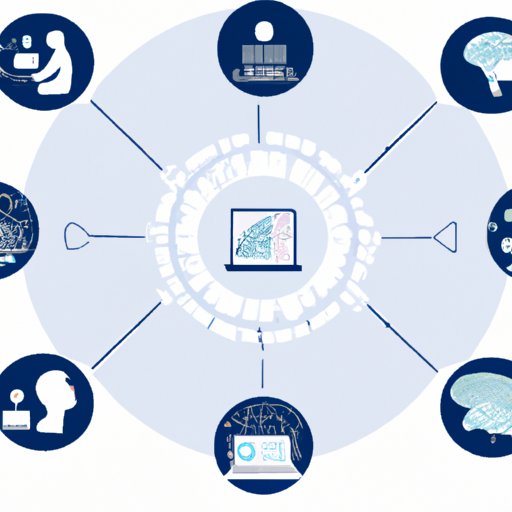Introduction
Data science and artificial intelligence (AI) are two of the most powerful technologies today. They have revolutionized the way businesses operate and allowed for the development of innovative products and services. But what is the relationship between these two technologies? In this article, we will explore the intersection of AI and data science, examine the benefits of combining them, and investigate the future of their collaboration.

Exploring the Intersection of AI and Data Science
Data science and AI are closely related fields that are used to analyze large amounts of data and uncover meaningful insights. Both disciplines rely heavily on algorithms and techniques such as machine learning and natural language processing to extract valuable information from data. AI and data science have a symbiotic relationship in which each field can benefit from the other.
At the core of AI is the ability to make decisions based on data. Data science provides the tools and techniques needed to structure and process data so that it can be used for decision-making. Similarly, AI can help data scientists uncover patterns and trends in data that were previously hidden. By working together, AI and data science can unlock new insights and enable more accurate predictions.

Examining the Benefits of Combining AI and Data Science
The combination of AI and data science has many potential benefits. These include improved efficiency, better customer service, and enhanced decision-making. By leveraging the strengths of both disciplines, businesses can gain a competitive edge and stay ahead of the competition.
Understanding the Role of Machine Learning in AI and Data Science
Machine learning is a subset of AI that enables computers to learn from data without being explicitly programmed. It uses algorithms to identify patterns in data and make predictions or decisions based on those patterns. Machine learning is used extensively in both AI and data science, and its applications range from facial recognition to predictive analytics.
In AI, machine learning is used to develop autonomous systems that can make decisions without human intervention. For example, an AI system could be used to detect objects in an image or recognize speech. In data science, machine learning is used to uncover patterns and correlations in data that could be used to make predictions or decisions. This could be anything from predicting stock prices to detecting fraud.

Analyzing the Impact of Automation on AI and Data Science
Automation is another key technology that is closely related to AI and data science. Automation refers to the use of machines and software to automate repetitive tasks, freeing up humans to focus on higher-level tasks. Automation can be used to improve the efficiency of AI and data science processes, allowing businesses to do more with less resources.
For example, automation can be used to streamline the process of ingesting and preparing data for analysis. This could involve using software to extract, clean, and organize data before it is fed into an AI or data science algorithm. Automation can also be used to automate the deployment of AI models, allowing businesses to quickly deploy models and iterate on them without having to manually code and deploy them.
Investigating the Future of AI and Data Science Collaboration
The combination of AI and data science has the potential to revolutionize many industries. As the two disciplines continue to evolve, there are many potential applications for their collaboration. From healthcare to finance, AI and data science can be used to solve complex problems and create solutions that weren’t possible before.
However, there are also challenges associated with AI and data science collaboration. One of the biggest challenges is ensuring that AI models are trained on high-quality data. Poorly trained models can lead to inaccurate results, which can have disastrous consequences. Additionally, AI and data science require a lot of computing power, which can be expensive and difficult to scale.
Conclusion
Data science and artificial intelligence are two powerful fields that have the potential to revolutionize many industries. By understanding the relationship between the two disciplines and leveraging the strengths of each, businesses can unlock new insights and gain a competitive edge. However, there are also challenges associated with AI and data science collaboration, such as ensuring that AI models are trained on high-quality data and managing the costs of computing power. Despite these challenges, the potential for AI and data science collaboration is immense and should not be overlooked.
(Note: Is this article not meeting your expectations? Do you have knowledge or insights to share? Unlock new opportunities and expand your reach by joining our authors team. Click Registration to join us and share your expertise with our readers.)
